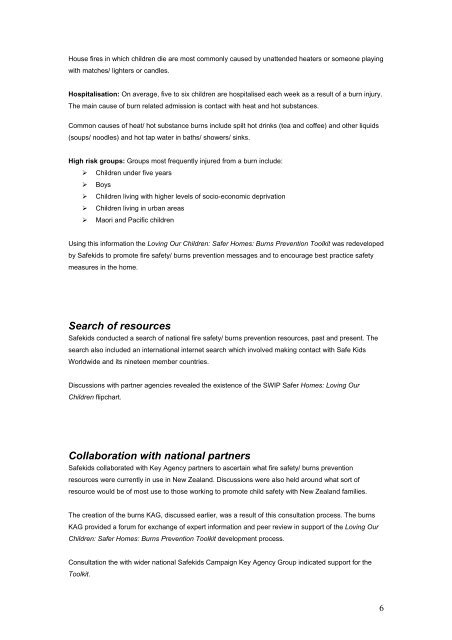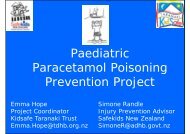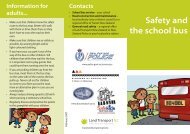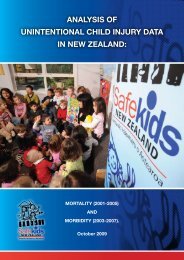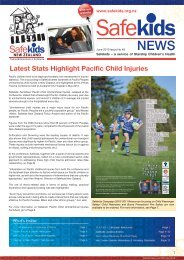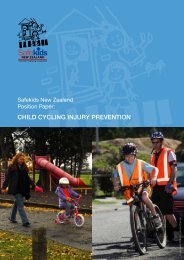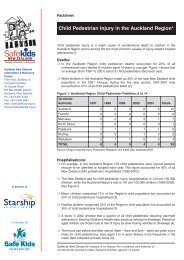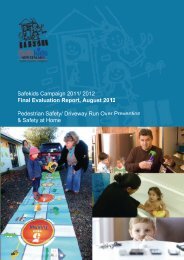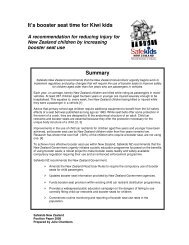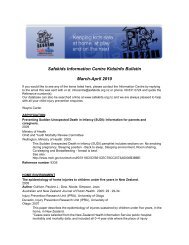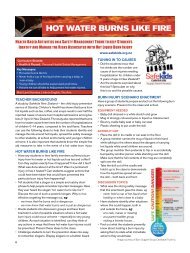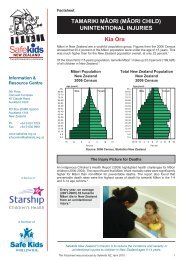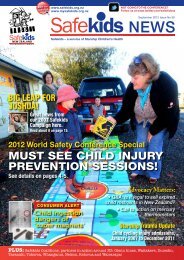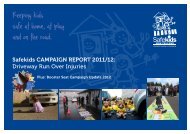Safekids Campaign 2010/11: Fire Safety/ Burns Prevention Contents
Safekids Campaign 2010/11: Fire Safety/ Burns Prevention Contents
Safekids Campaign 2010/11: Fire Safety/ Burns Prevention Contents
You also want an ePaper? Increase the reach of your titles
YUMPU automatically turns print PDFs into web optimized ePapers that Google loves.
House fires in which children die are most commonly caused by unattended heaters or someone playing<br />
with matches/ lighters or candles.<br />
Hospitalisation: On average, five to six children are hospitalised each week as a result of a burn injury.<br />
The main cause of burn related admission is contact with heat and hot substances.<br />
Common causes of heat/ hot substance burns include spilt hot drinks (tea and coffee) and other liquids<br />
(soups/ noodles) and hot tap water in baths/ showers/ sinks.<br />
High risk groups: Groups most frequently injured from a burn include:<br />
‣ Children under five years<br />
‣ Boys<br />
‣ Children living with higher levels of socio-economic deprivation<br />
‣ Children living in urban areas<br />
‣ Maori and Pacific children<br />
Using this information the Loving Our Children: Safer Homes: <strong>Burns</strong> <strong>Prevention</strong> Toolkit was redeveloped<br />
by <strong>Safekids</strong> to promote fire safety/ burns prevention messages and to encourage best practice safety<br />
measures in the home.<br />
Search of resources<br />
<strong>Safekids</strong> conducted a search of national fire safety/ burns prevention resources, past and present. The<br />
search also included an international internet search which involved making contact with Safe Kids<br />
Worldwide and its nineteen member countries.<br />
Discussions with partner agencies revealed the existence of the SWIP Safer Homes: Loving Our<br />
Children flipchart.<br />
Collaboration with national partners<br />
<strong>Safekids</strong> collaborated with Key Agency partners to ascertain what fire safety/ burns prevention<br />
resources were currently in use in New Zealand. Discussions were also held around what sort of<br />
resource would be of most use to those working to promote child safety with New Zealand families.<br />
The creation of the burns KAG, discussed earlier, was a result of this consultation process. The burns<br />
KAG provided a forum for exchange of expert information and peer review in support of the Loving Our<br />
Children: Safer Homes: <strong>Burns</strong> <strong>Prevention</strong> Toolkit development process.<br />
Consultation the with wider national <strong>Safekids</strong> <strong>Campaign</strong> Key Agency Group indicated support for the<br />
Toolkit.<br />
6


